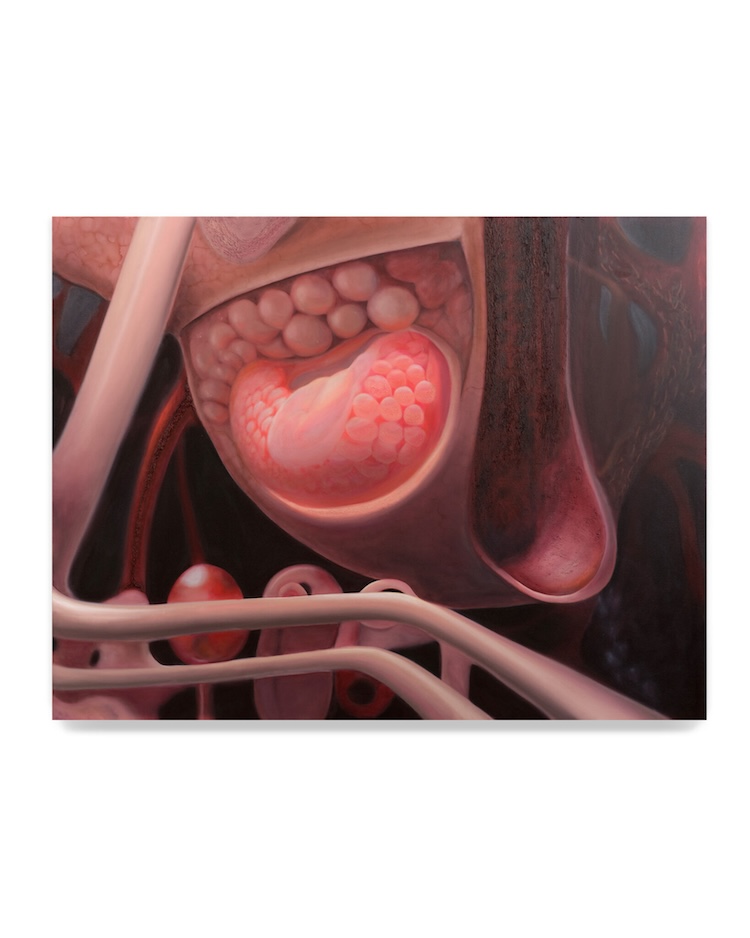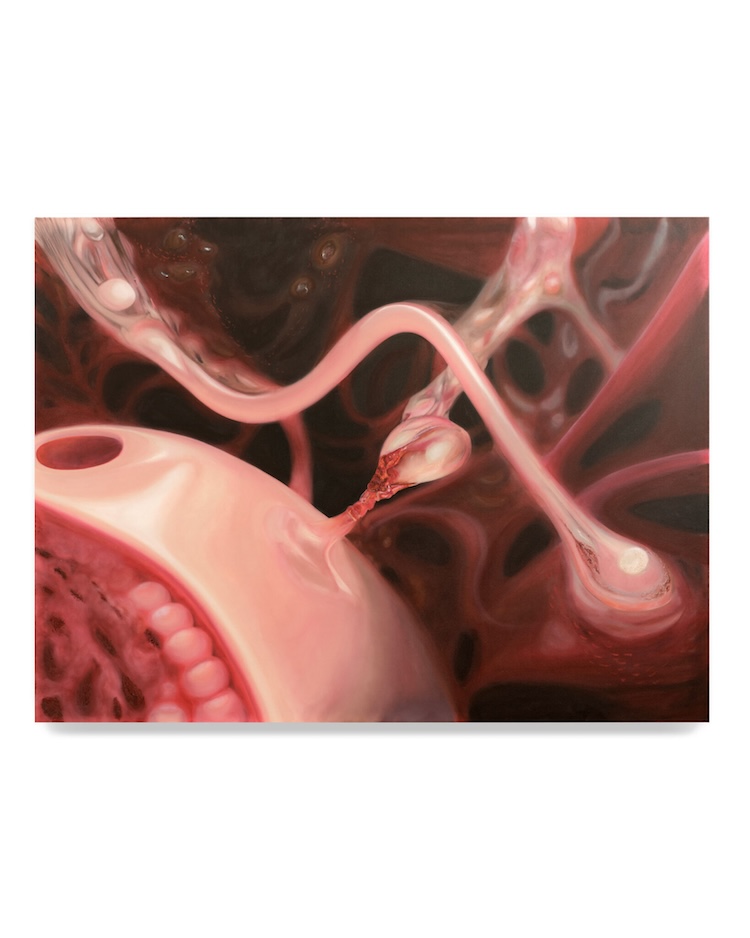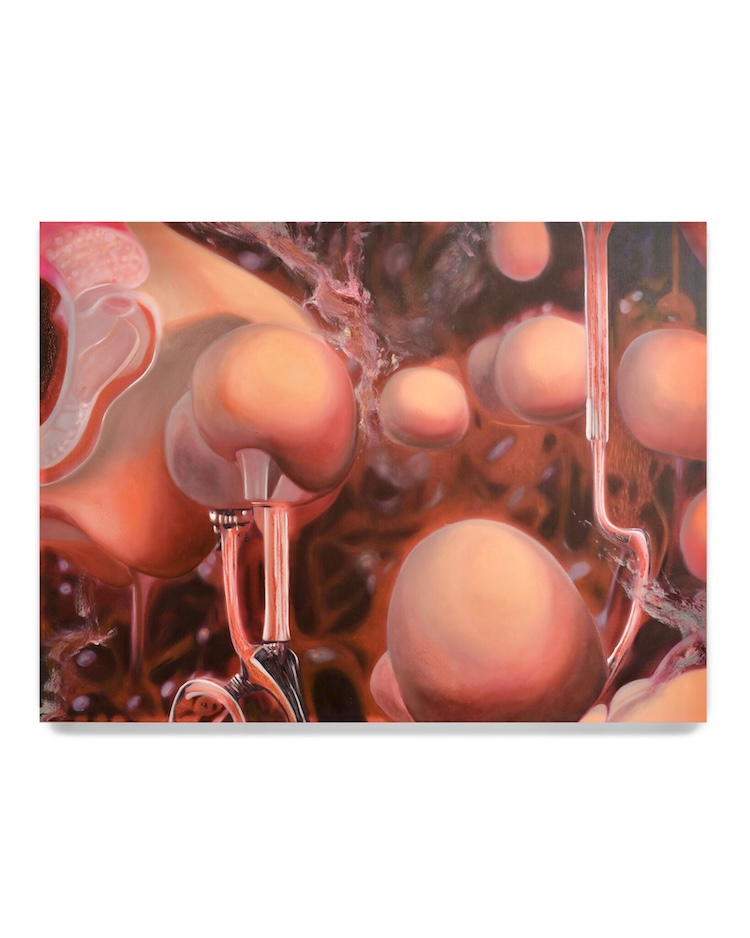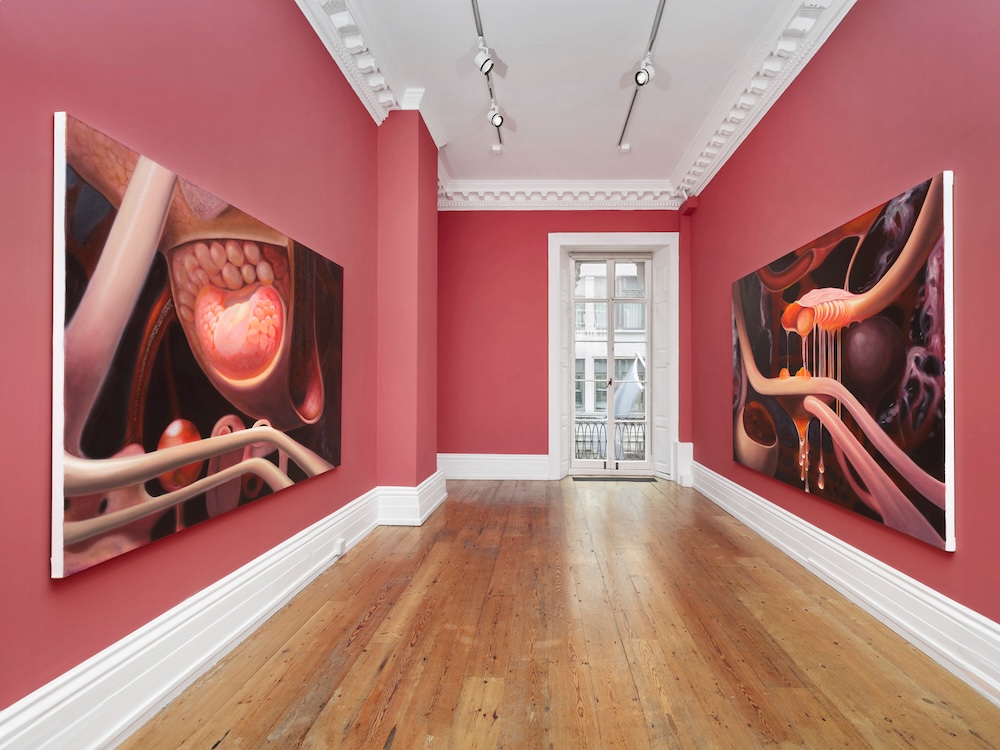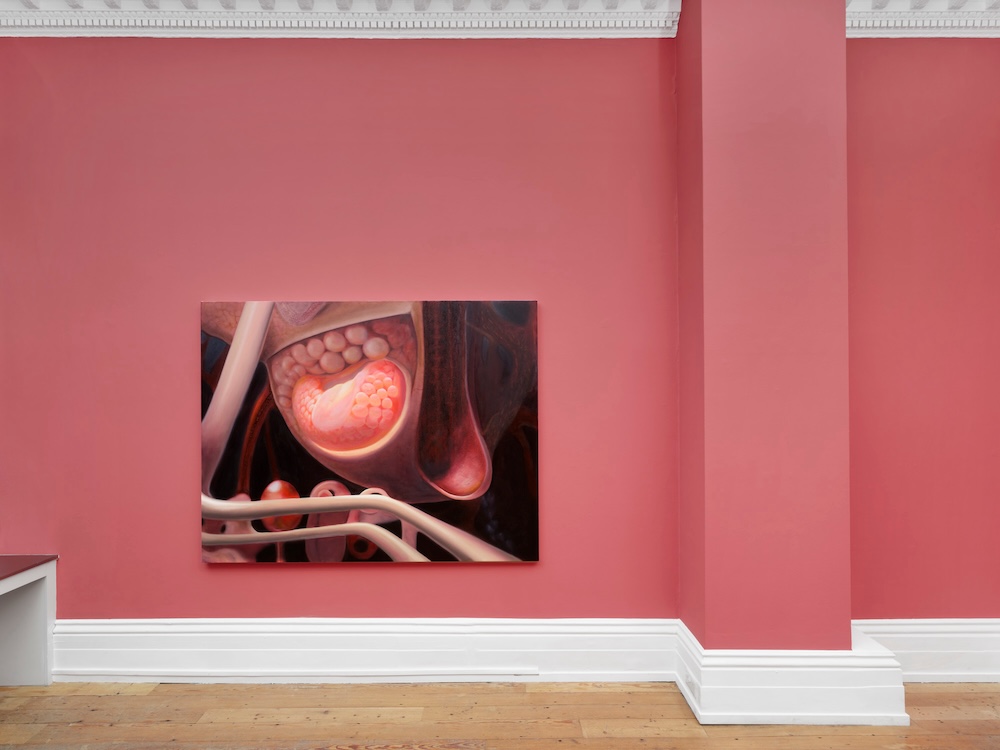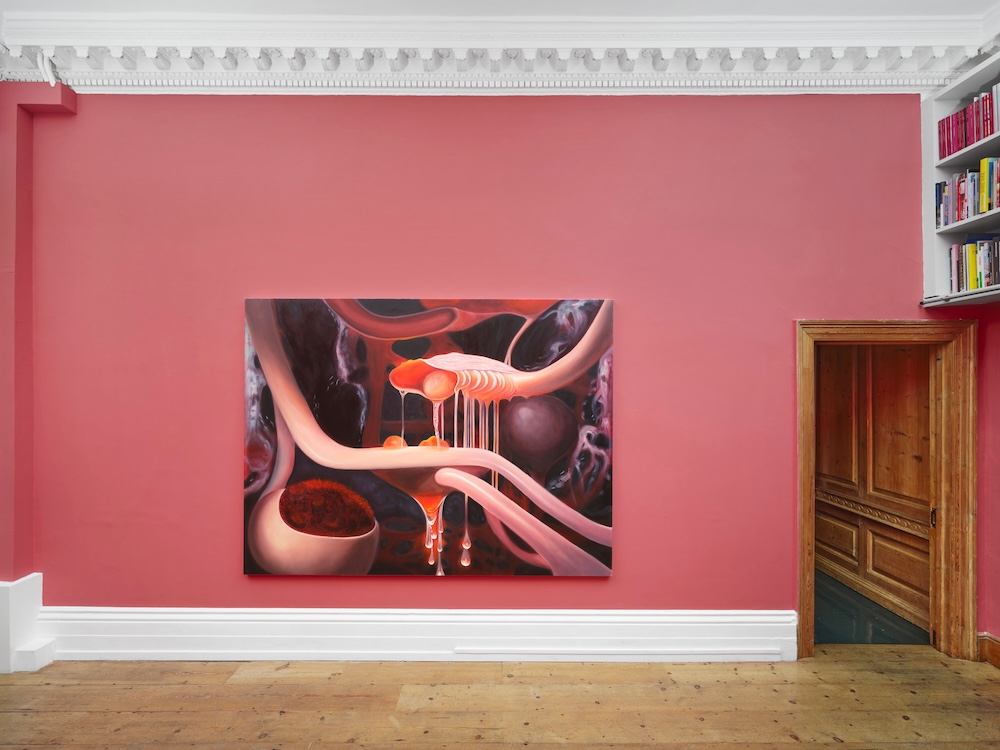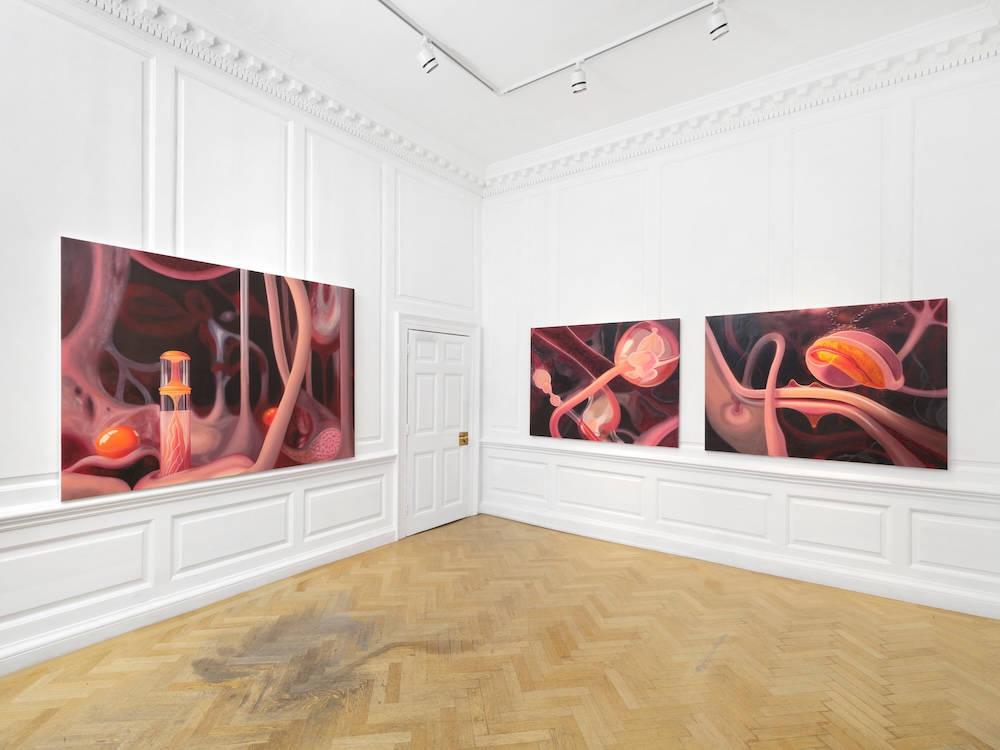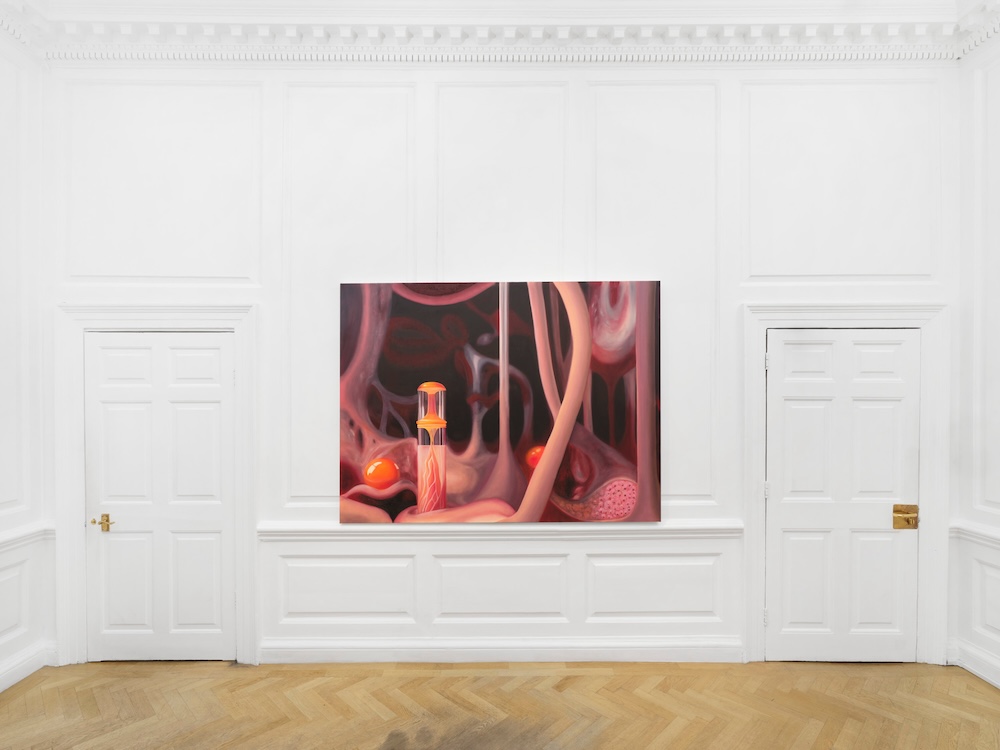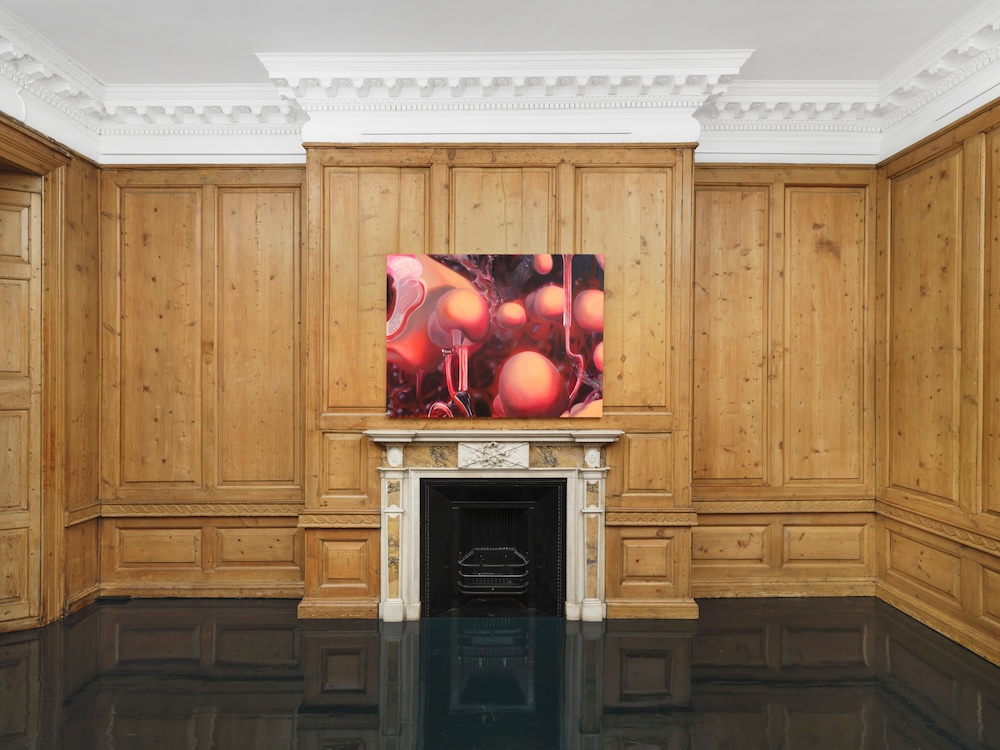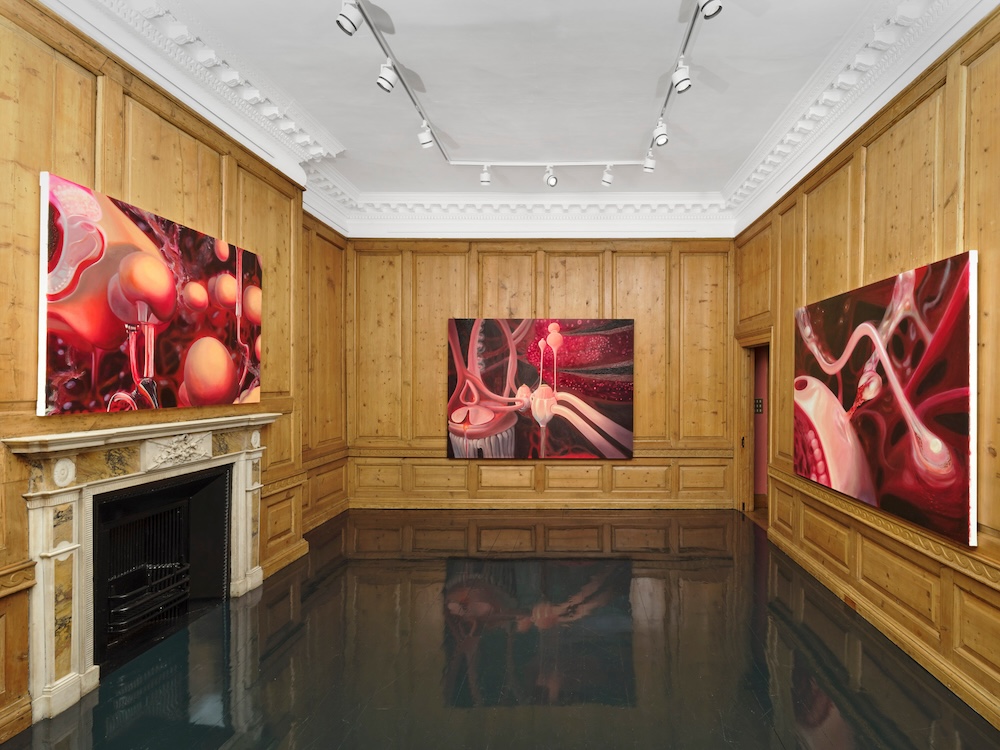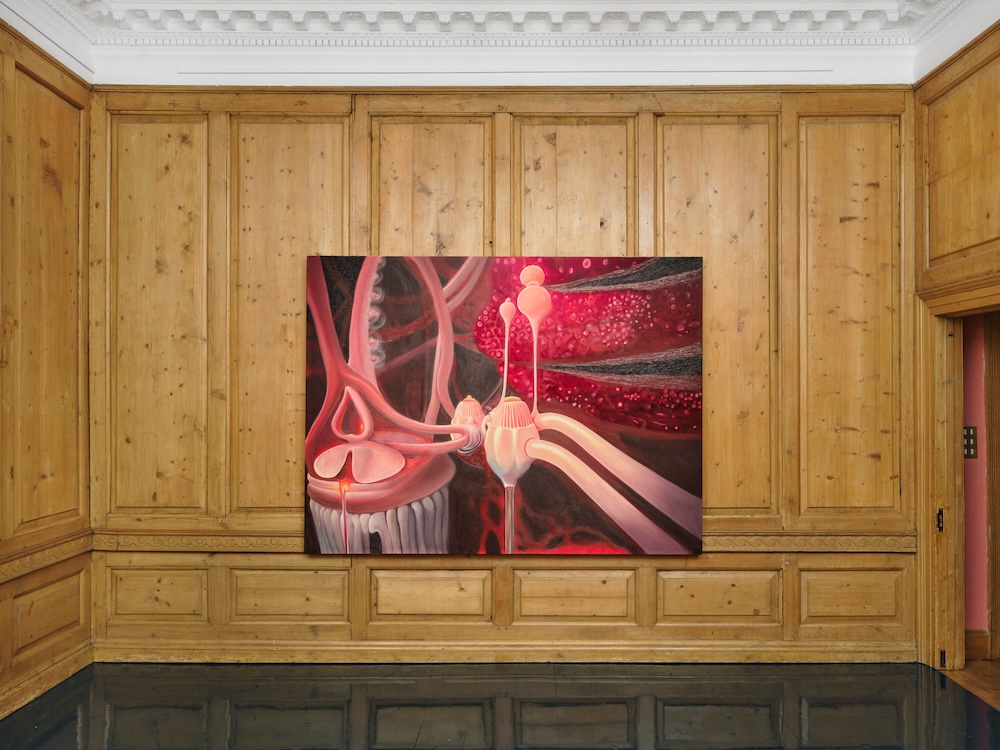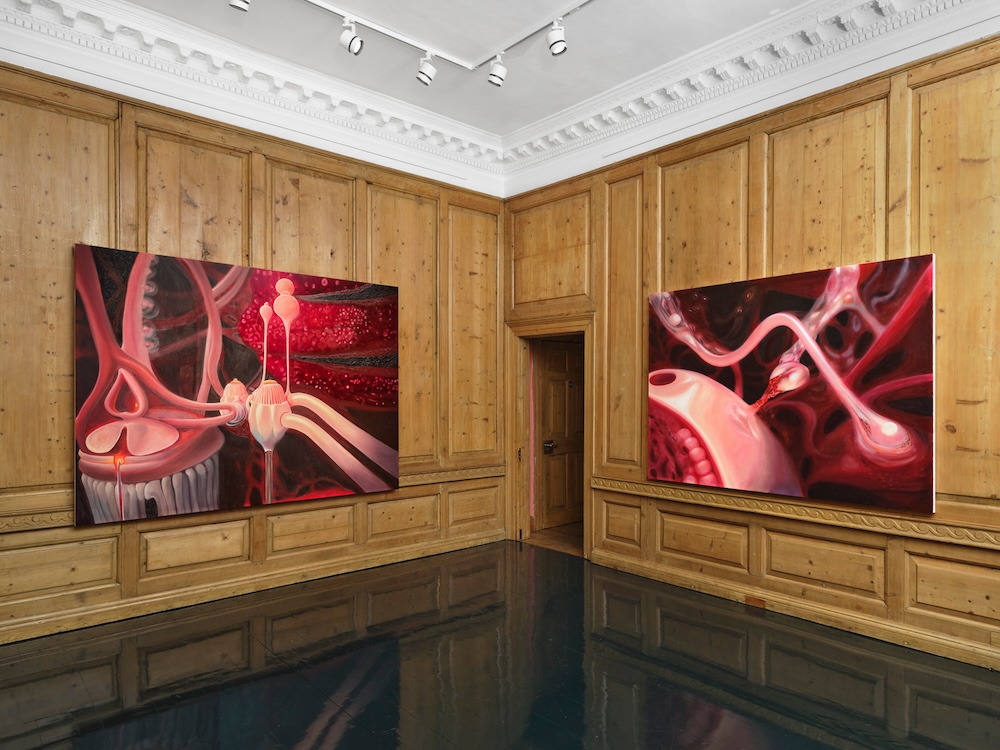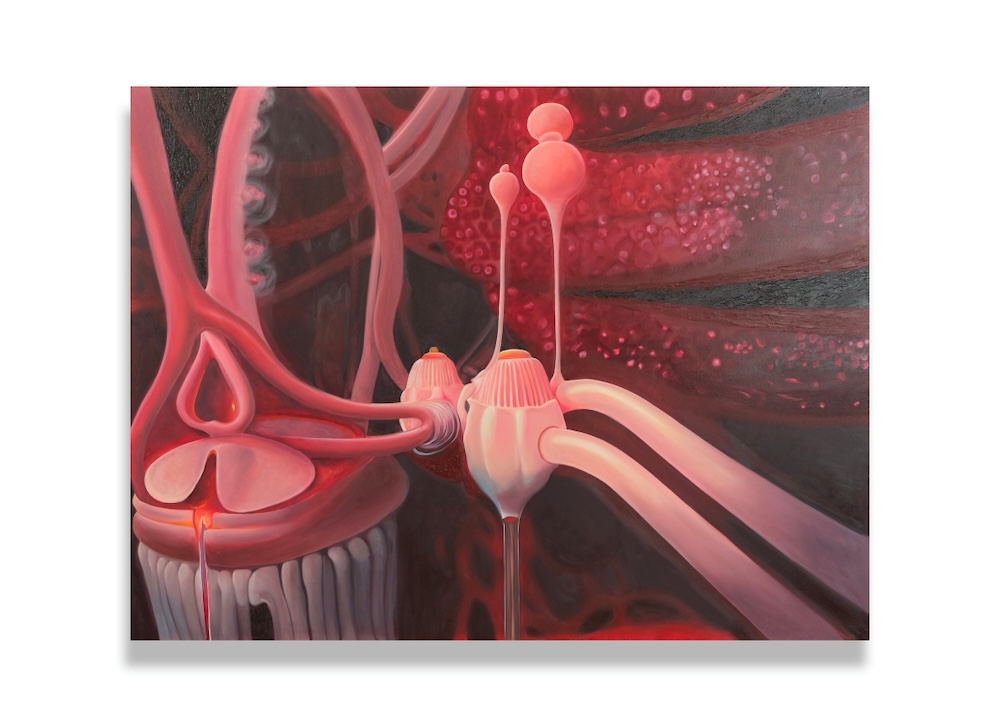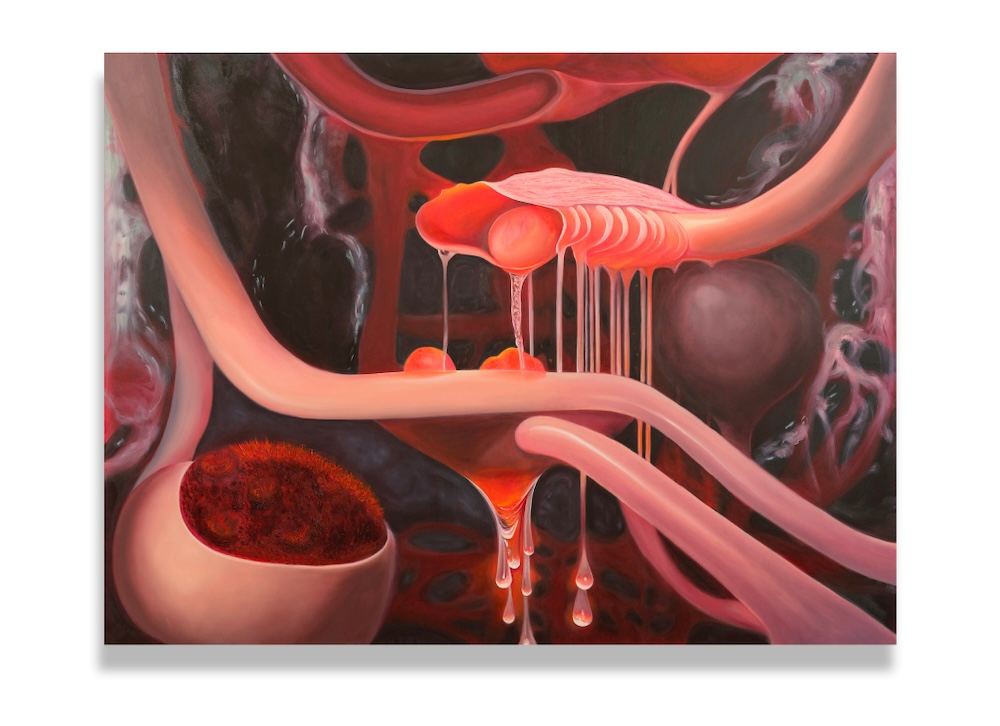Carl Kostyál is delighted to present Secretions & Formations, Meeson Jessica Pae’s debut exhibition with the gallery.
The philosopher and author Iris Murdoch, in discussing the motive for making art of any sort, described the process as the urge to give form to something that remains alarming formless – life. Meeson Jessica Pae takes this notion to thrillingly, disturbingly intimate territory – she gives form to an imagined landscape of the body, or rather an eerily seductive positing of its inner workings, drawn from her research of centuries of medical exploration and her own experience.
Bursting forms, pulsing holes, and dripping elements intimately capture the inner landscape of the body, probing parallels and connections between the micro and macro systems of life. Pae’s recent encounter with uterine overgrowths inspired this deep, painterly metaphorical exploration of connections between micro and macrocosms, inner and outer realms and individual and societal systems. Pae grapples with the body’s fragility, emphasizing our existence as intricate biological machinery contained in sacks of flesh.
Beyond the human form, the biological landscape she depicts extends tendrils to embrace the broader ecosystem, pointing to the interconnectedness of all living things. The paintings collectively become an artistic exploration of the intricate web of life, where the seen and unseen collide, offering reflections on the shared essence of our existence across internal and external, granular and expansive realms.
“I typically build my reference material by building biomorphic worlds in 3D software to setup real world physics defying motion, lights, and gravitational pull. There is a push and pull and the infinite possibilities that 3D world building allows," Pae says. "Many of the forms are based on animations that are in states of transformation and one frame of a critical moment is captured as the base imagery from which the interior biological landscapes unfold. The source images to create the 3D worlds are often based on 18th century and onward scientific discoveries and the history of the medical field. Taking these early pre-microscope theories and imagined realities as well as early post microscope discoveries. So another tool would be historical science and medical literature and the actual tools and devices used to expand understanding of the inner landscape of the body.
"I use photography, captured through my microscope where I collect my own specimens – some from the natural world, some from my own body, and donated specimens. These photographs are layered or embedded with renders to create the final reference image. I translate these images onto canvas with oil, and mixtures of oil and sediment, marble dust, sand, and other oil mediums. These different viscosities of the paint allow me to use the natural movement of fluids to pool into watercolour-like soft moments or thick impasto formations . Other times, I will use surgical tool to carve out thick paint and reveal the underlying layers like unearthing the body of the canvas."



